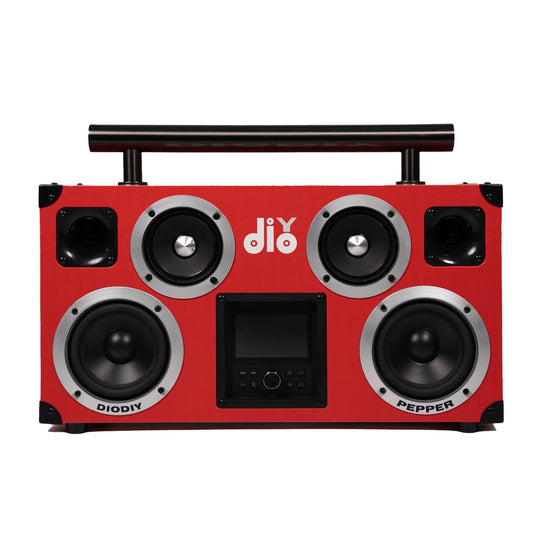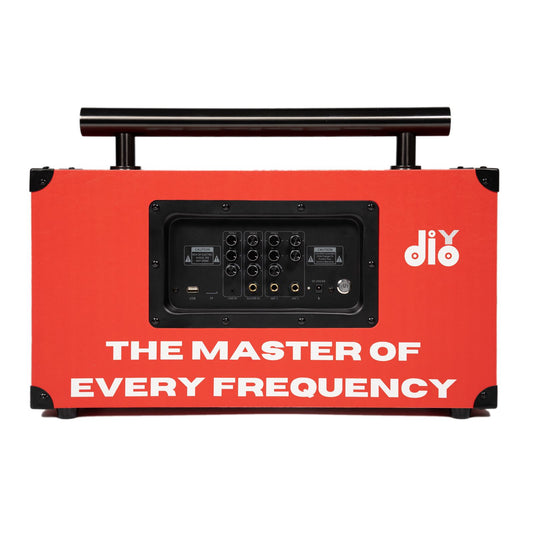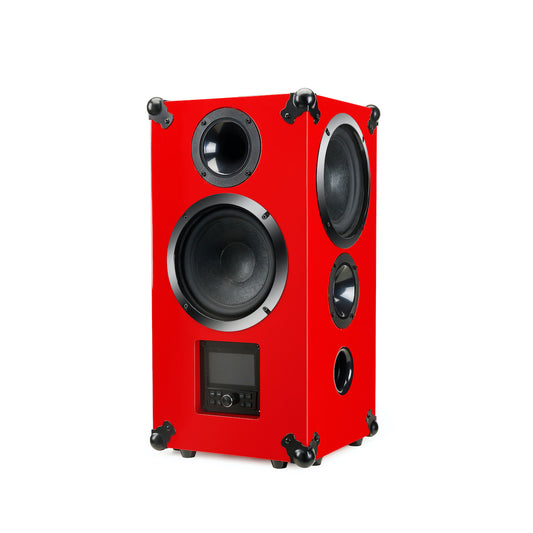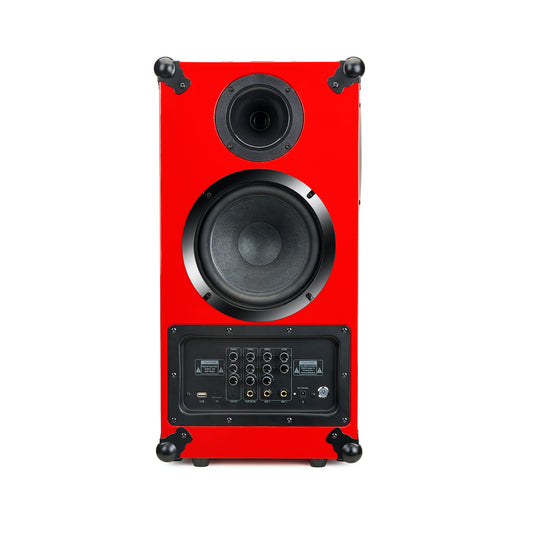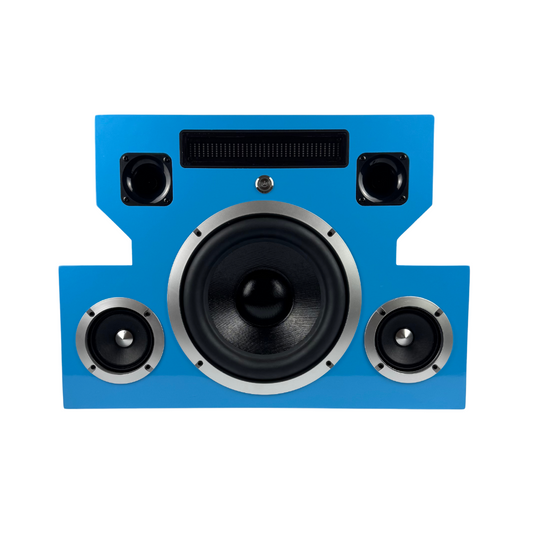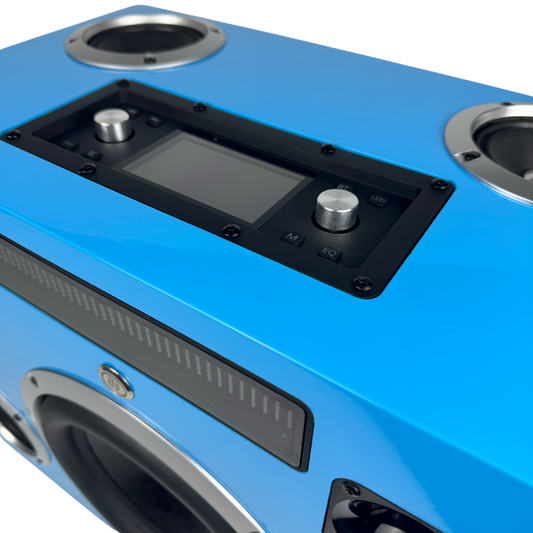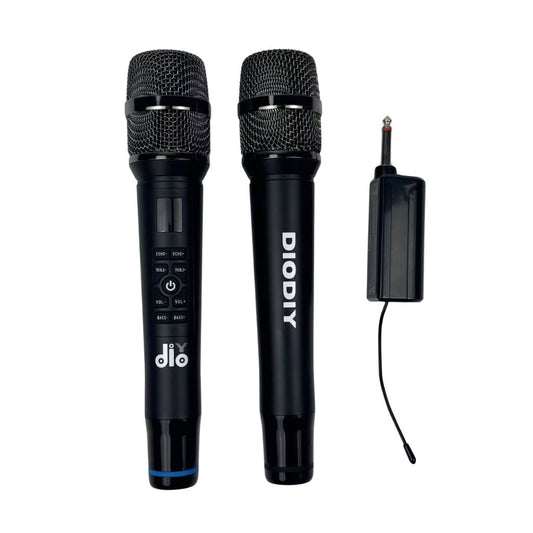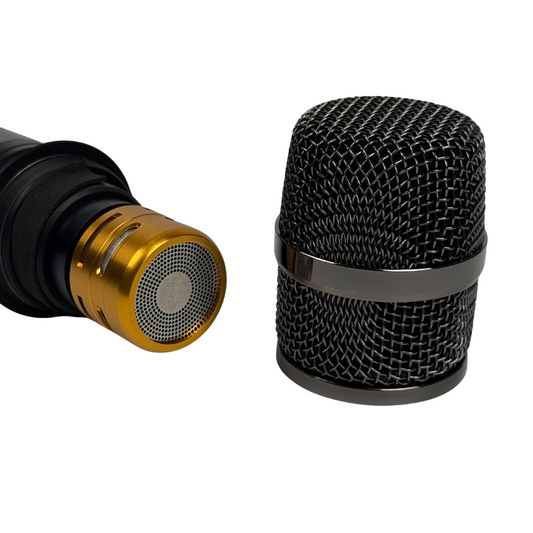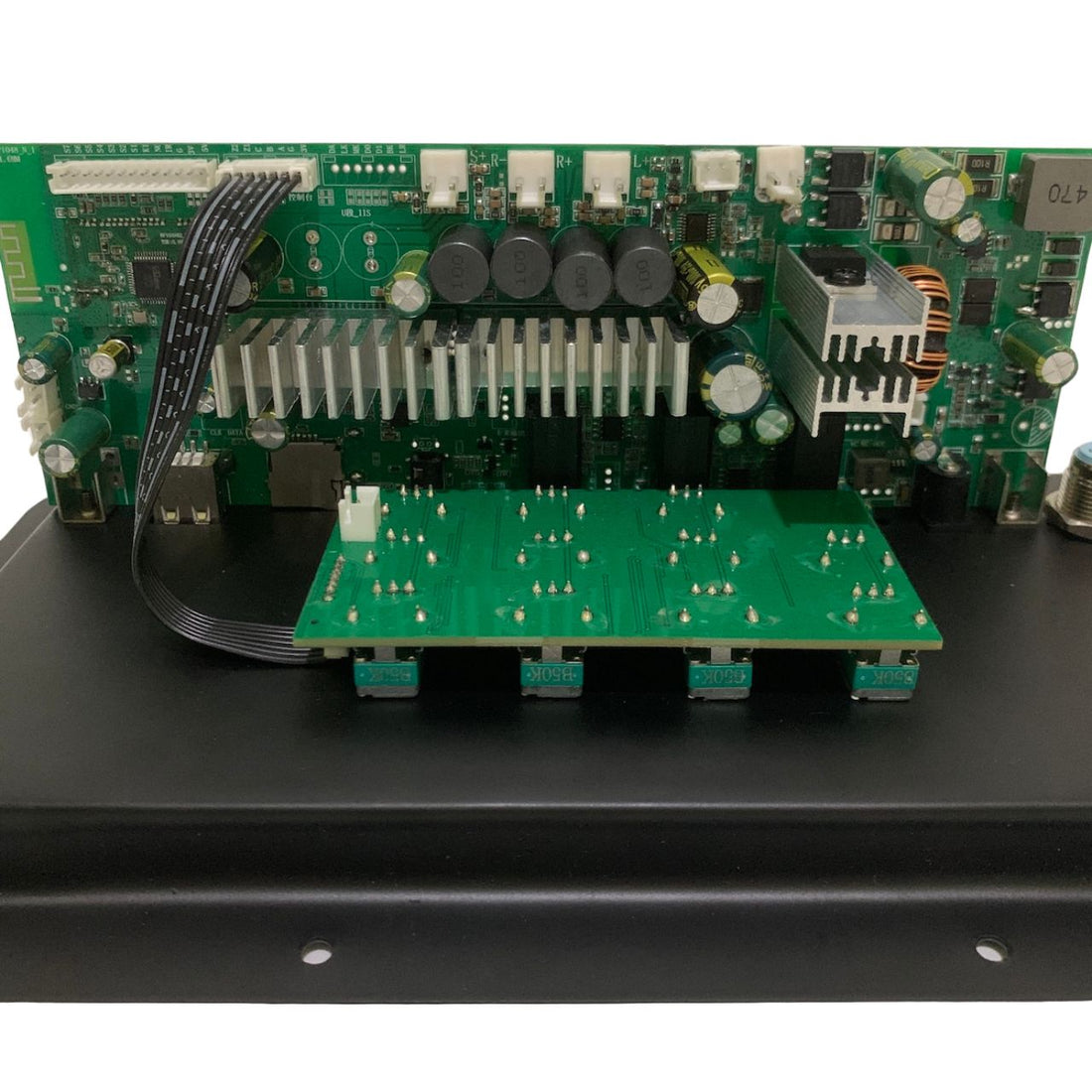
What is a 2.1 Amp and How to Choose the Right Setup
Share
When building a custom speaker system, one of the most critical components is the amplifier. Amplifiers are responsible for boosting audio signals and driving your speakers to produce sound. A popular amplifier configuration is the 2.1 amp, commonly used in home theaters, stereo systems, and custom audio setups.
In this blog, we'll explain what 2.1 means in amplifiers, explore common speaker setups using 2.1 amps, and provide guidance on how to choose the right amplifier for your audio needs. Whether you're a DIY audio enthusiast or a professional sound system designer, understanding the ins and outs of a 2.1 amplifier can help you optimize your custom speaker setup for the best performance.
What Does "2.1" Mean in Amplifiers?
The term "2.1" in amplifiers refers to the channel configuration of the system. Specifically:
- The "2" represents the two stereo channels, typically the left and right speakers, responsible for handling the mid and high-frequency sounds.
- The ".1" represents a subwoofer channel that handles the low-frequency or bass sounds.
In simpler terms, a 2.1 amplifier is designed to power two main speakers (left and right) along with one subwoofer. This configuration is popular because it provides a good balance between stereo sound for higher frequencies and powerful bass through the subwoofer, offering a more immersive listening experience.
2.1 vs. Other Amplifier Configurations

To better understand what makes a 2.1 amp different, let's briefly compare it with other common configurations:
- 2.0 Amplifier: A 2.0 amp drives two speakers (left and right) without a subwoofer channel. While it provides stereo sound, it may lack the deep bass impact offered by a 2.1 system.
- 5.1 Amplifier: Common in home theater setups, this amp powers five speakers (left, right, center, and two surround speakers) and one subwoofer. It offers a more immersive, multi-directional sound but is more complex and expensive.
- 7.1 Amplifier: Even more advanced than the 5.1 setup, this amp supports seven speakers and one subwoofer for an enhanced surround sound experience.
The 2.1 amplifier is a balanced choice for users who want more bass than a 2.0 setup but don't need the complexity or cost of a 5.1 or 7.1 system.
How a 2.1 Amplifier Works
A 2.1 amplifier works by dividing the audio signal into three channels: two for the stereo output (left and right) and one for the subwoofer. Each channel is amplified individually to ensure the speakers and subwoofer get the appropriate power for their specific frequency range.
- Stereo Channels (Left and Right): These channels reproduce mid and high-frequency sounds, such as vocals, instruments, and dialogue. The left and right speakers work together to create a wide stereo image, giving the listener the sense that sound is coming from different directions.
- Subwoofer Channel (".1"): The subwoofer handles low-frequency sounds, such as bass drums, deep bass guitar notes, and explosions in movies. The subwoofer adds depth to the overall sound by reproducing frequencies that the smaller stereo speakers cannot handle efficiently.
By dividing the sound this way, a 2.1 amp provides a more dynamic and high-quality audio experience, allowing each speaker to specialize in its frequency range.
Common Setups Using a 2.1 Amplifier
A 2.1 amp can be used in various speaker configurations, depending on the environment and the type of audio experience you want to create. Here are some common setups where a 2.1 amplifier is commonly used:
- Home Theater System
A 2.1 amplifier is a popular choice for smaller home theater systems, particularly when space or budget is limited. In this setup:
- The two stereo channels are connected to left and right speakers placed near the television or projector screen.
- The subwoofer is placed either in the center or near the listener's seating area to provide deep, immersive bass.
This setup provides a clear stereo sound and a powerful bass response, making it suitable for movie watching and casual music listening without the complexity of a full surround sound system.
- Desktop or Computer Audio System

For those looking to enhance their computer or gaming setup, a 2.1 amplifier can power a desktop speaker system. In this setup:
- Two small bookshelf speakers are placed on either side of the computer screen for left and right stereo output.
- A compact subwoofer is placed under the desk or near the workstation to handle bass frequencies.
This type of setup is ideal for gamers, content creators, or anyone who wants to upgrade their computer’s audio quality without investing in a more extensive system. The 2.1 amp allows for effective sound reproduction with deep bass for a richer multimedia experience.
- Music Listening Room
Audiophiles often opt for 2.1 amps when building dedicated music listening setups. In this configuration:
- Two high-quality floor-standing or bookshelf speakers are used for stereo playback, delivering crisp and detailed mid and high frequencies.
- The subwoofer adds warmth and depth to the bass, enriching the overall musical experience.
A 2.1 system in a dedicated music room provides a more intimate and focused listening experience compared to larger multi-channel setups, making it ideal for music lovers who appreciate custom speakers and want to fine-tune their system for optimal sound quality.
- Outdoor or Patio Speaker System
A 2.1 amplifier can also be used for outdoor speaker systems. In this setup:
- Two weather-resistant speakers are placed in strategic locations around the patio or garden area for stereo sound coverage.
- A subwoofer, either outdoor-rated or placed in a sheltered area, is added to ensure that bass tones are not lost in the open-air environment.
This configuration is perfect for entertaining guests outdoors or enjoying music in an open setting where clear, powerful audio is needed.
How to Choose the Right 2.1 Amplifier for Your Custom Speaker System
Selecting the right 2.1 amp for your custom speaker system depends on several factors, including the size of your space, the type of speakers you're using, and your desired sound quality. Below are key considerations to help you choose the right setup.
1. Power Output
One of the most important factors in choosing a 2.1 amplifier is its power output. The power rating of an amplifier is typically measured in watts, and it determines how much energy the amp can supply to your speakers and subwoofer. When selecting a 2.1 amp, it’s essential to match the power output with the power handling capacity of your speakers.
- For small rooms or desktop setups: An amplifier with 30-50 watts per channel should be sufficient for near-field listening.
- For medium-sized rooms or home theaters: Look for an amplifier with 60-100 watts per channel to fill the room with clear, powerful sound.
- For large spaces or outdoor setups: You may need a more powerful amplifier with 100+ watts per channel to ensure enough volume and bass response in open areas.

Make sure the subwoofer channel is also rated appropriately. A typical subwoofer may require between 80 and 150 watts to produce deep, impactful bass.
2. Speaker Compatibility
It’s crucial to ensure that your custom speaker setup is compatible with the 2.1 amp you're considering. Some amplifiers are designed to work with specific types of speakers, such as bookshelf speakers, floor-standing speakers, or even in-wall speakers.
- Impedance Matching: Amplifiers are rated for a certain impedance (measured in ohms). Most home speakers are rated at 4, 6, or 8 ohms. Ensure that your amplifier can handle the impedance of your speakers to avoid overloading or damaging the system.
- Speaker Size: Larger speakers generally require more power to drive them effectively. For example, floor-standing speakers may need more powerful amplification compared to smaller bookshelf speakers.
- Subwoofer Integration: The subwoofer you choose should be compatible with the subwoofer output of the 2.1 amp. Look for amps with dedicated subwoofer channels that support the sub’s power and impedance ratings.
3. Class of Amplifier
Amplifiers come in various classes, each with its own characteristics in terms of efficiency, sound quality, and power handling. For 2.1 amps, the most common classes are Class A, Class AB, and Class D.
- Class A Amplifiers: Known for their excellent sound quality but are highly inefficient and generate a lot of heat. Class A amps are not commonly used in 2.1 setups due to their low power efficiency.
- Class AB Amplifiers: These amplifiers combine the sound quality of Class A with the efficiency of Class B, making them a popular choice for high-quality 2.1 systems.
- Class D Amplifiers: Highly efficient and compact, Class D amps are widely used in 2.1 amps. They are ideal for modern systems due to their ability to produce high power with minimal heat output, making them a good fit for home theaters and portable setups.
For most custom speaker setups, a Class D amplifier offers the best balance between performance, efficiency, and size, especially if you want a sleek, powerful system that doesn't take up too much space or generate excessive heat.
4. Additional Features
Modern 2.1 amplifiers often come with a variety of additional features that enhance functionality and user experience. When choosing a 2.1 amp for your custom speaker setup, consider the following features:
- Bluetooth Connectivity: Many 2.1 amplifiers now come with Bluetooth, allowing you to wirelessly stream music from your phone, tablet, or computer. This feature adds convenience, especially for home setups or portable audio systems.
- Digital Inputs and Outputs: If you're planning to connect your amplifier to modern devices like TVs, gaming consoles, or streaming services, look for amplifiers with digital inputs (such as optical or coaxial). These inputs ensure the highest quality signal transfer and improved sound quality.
- Subwoofer Control: Some 2.1 amplifiers include dedicated controls for the subwoofer, allowing you to adjust the bass level separately from the stereo channels. This can be particularly useful for fine-tuning the bass response based on room acoustics or personal preference.
- Equalizer and Tone Controls: Built-in equalizers or tone controls allow you to adjust the frequency response of your system. This is especially useful if you want to tailor the sound of your system to different types of music, movies, or games.

- Multiple Inputs: Amplifiers with multiple input options, such as RCA, AUX, USB, and even wireless microphone connectivity, allow for greater flexibility in connecting various audio sources. This is useful if you plan to use the amplifier in a home theater, music studio, or event space.
- Display Screen: Some amplifiers feature an LCD display that shows input source, volume levels, and equalizer settings. This is particularly helpful for users who want easy visual control over their sound system.
- Remote Control: A remote control allows for easy operation of your 2.1 amp from across the room. It's a convenient feature for home theater setups or audio systems in larger spaces.
5. Budget Considerations
Finally, it’s important to balance your desired features with your budget. 2.1 amplifiers can vary widely in price depending on their power output, class, and additional features. Here are some price ranges to consider:
- Entry-Level: In the $50 to $150 range, you’ll find basic 2.1 amplifiers suitable for small to medium-sized rooms or desktop setups. These amplifiers often offer decent power output and essential features like Bluetooth, but they may lack advanced controls or customization options.
- Mid-Range: In the $150 to $400 range, you can expect amplifiers with higher power ratings, better sound quality, and more connectivity options, such as multiple inputs and subwoofer controls. These amps are ideal for home theater setups and custom speaker systems where you want more flexibility.
- High-End: Amplifiers priced over $400 typically offer premium features, such as advanced digital signal processing (DSP), high power output, and superior sound quality. These amplifiers are perfect for audiophiles or professionals who demand the best performance from their custom speaker
Don't be discouraged by the price yet! If you're seeking a high-end setup and want to get the most value for your money, we are your best choice. As a speaker manufacturer, we offer the lowest price with the highest quality by selling directly to our customers, eliminating middlemen such as e-commerce platforms or resellers. This approach allows us to keep prices as low as possible while providing constant support and warranty. Our 2.1 amplifier set, which includes an LCD screen, is available for just $130. Designed for professional use, it delivers high-end performance at an entry-level price, ensuring exceptional value for your custom speaker setup.
Conclusion: Choosing the Right 2.1 Amplifier for Your Custom Speaker System
A 2.1 amp is a versatile and powerful solution for a wide range of audio applications, from home theaters to desktop setups to custom speaker systems. By understanding the basics of a 2.1 amplifier and considering factors such as power output, speaker compatibility, amplifier class, additional features, and budget, you can select the right amplifier that meets your specific needs.
Whether you're looking to enhance your gaming audio setup, build a music listening room, or create a portable speaker system for outdoor use, the 2.1 amplifier provides an excellent balance of stereo sound and powerful bass. With the right 2.1 amplifier, you can achieve high-quality, dynamic audio that delivers an immersive listening experience tailored to your preferences.
For those designing custom speakers, a 2.1 amp offers the flexibility and power necessary to create a sound system that excels in clarity, depth, and impact. If you have any questions about choosing the right 2.1 amp or need assistance with your custom speaker project, feel free to contact us at DioDIY. We're here to help you build the perfect audio system!


